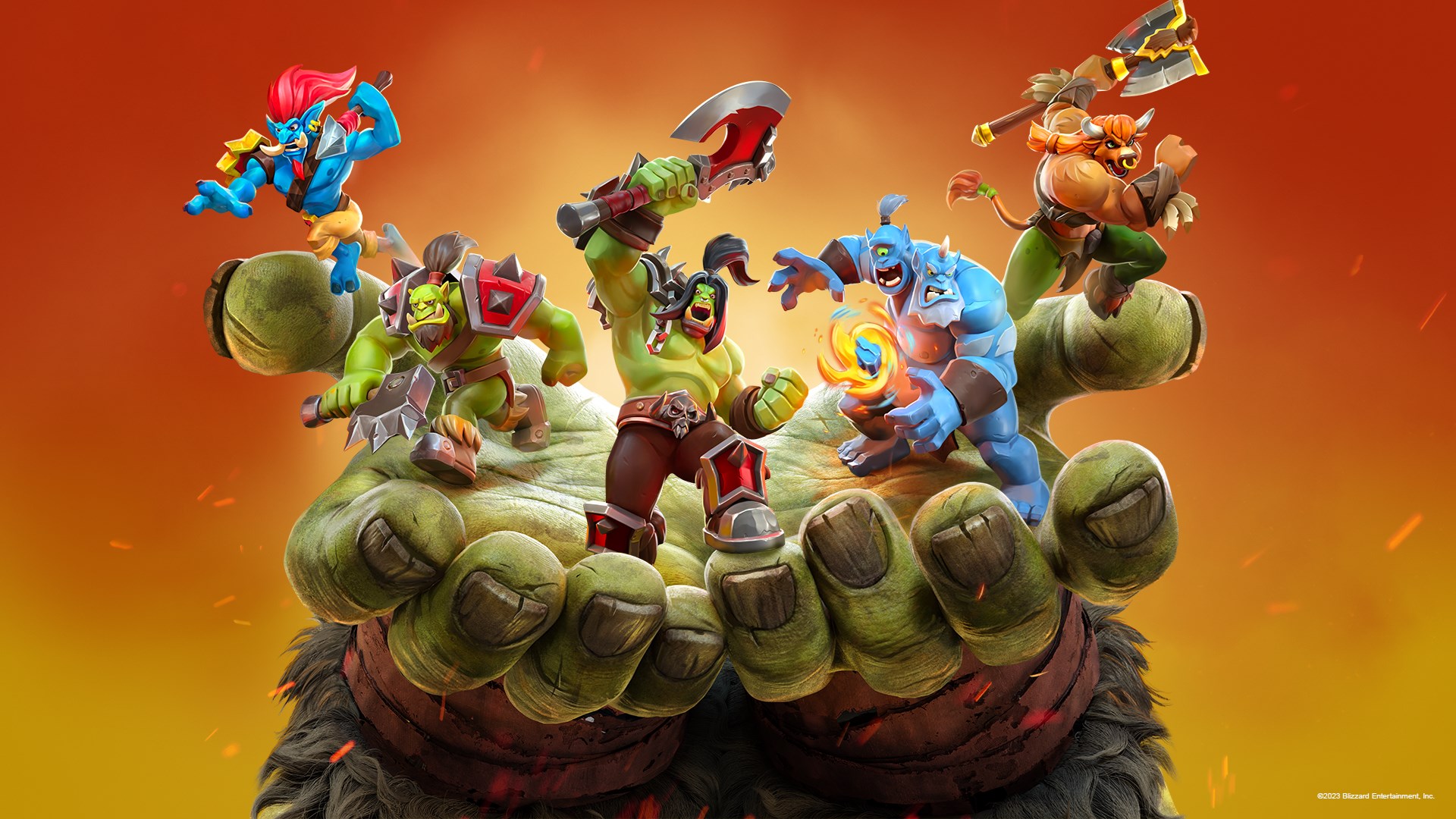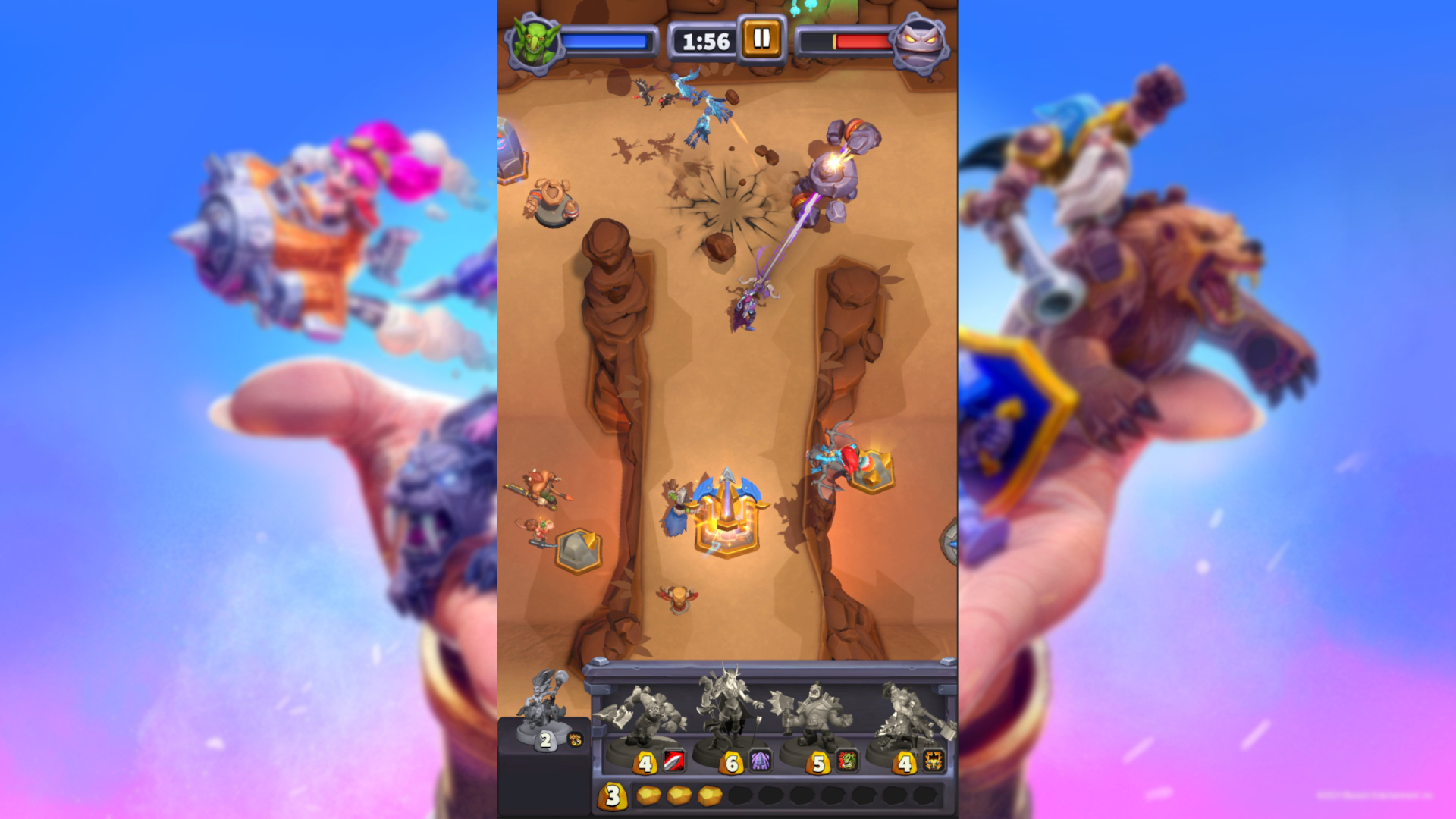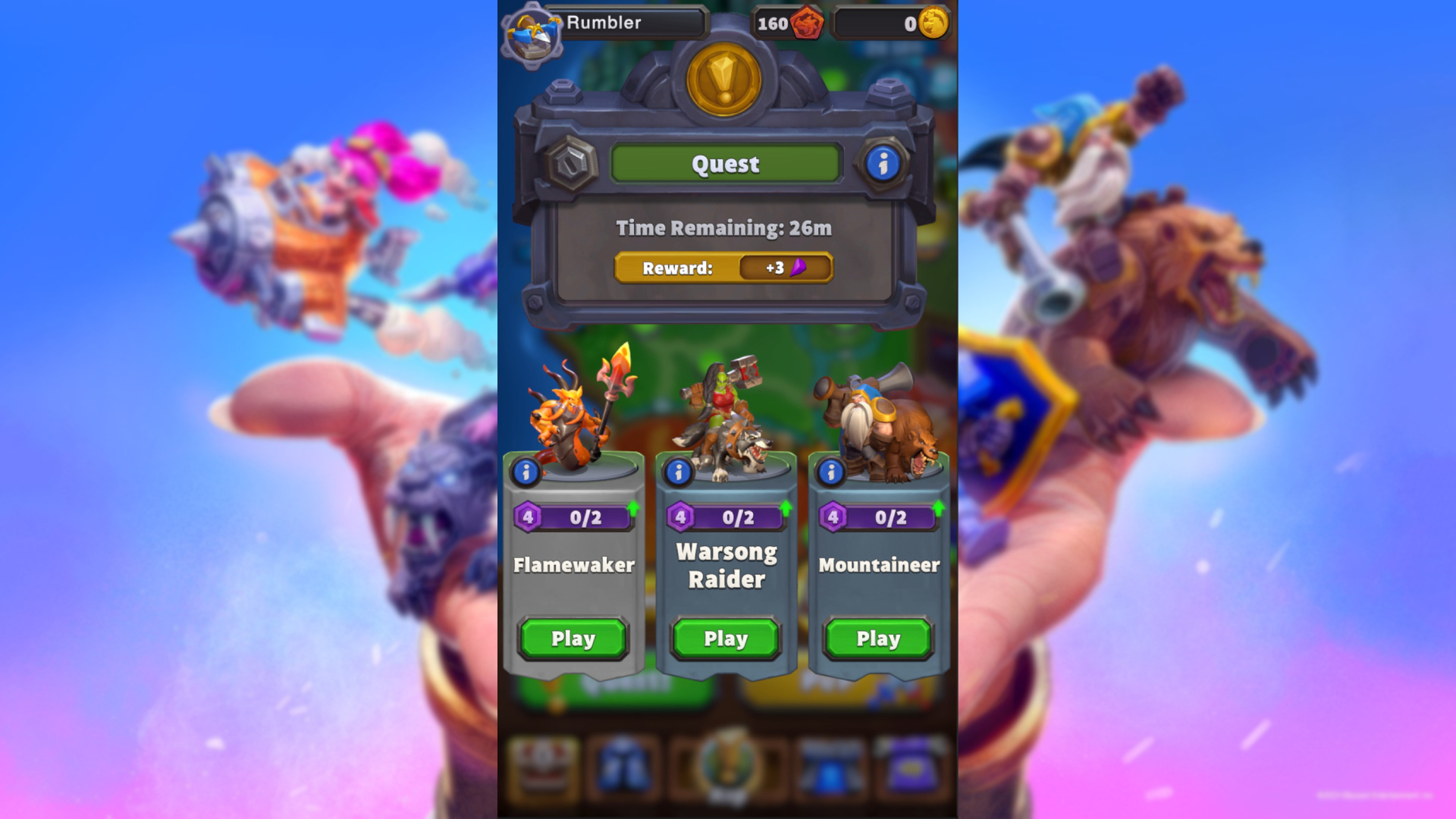Warcraft Rumble proved me wrong about auto battlers
Let’s get ready

Until Warcraft Rumble came along, I thought auto battlers were simplistic affairs with limited scope for player choice. In a genre where all of your units fight independently in self-contained engagements, I feared that there was no room for meaningful decisions. The latest mobile offering from Blizzard Entertainment not only proved me wrong but opened my eyes to the genre, helping me see it in a brand new light.
In Warcraft Rumble, you battle over a map like in a real-time strategy game (RTS). To do this, you have a rotating selection of units that you play using gold - the game’s main resource. Once played, your little soldiers advance toward the enemy along one of a selection of routes. Their goal is to reach the enemy’s base and reduce it to rubble, and they’ll confront any foes they come into contact with on the way.
On paper, it’s a simple formula. However, the reality couldn’t be more different. Scratch the surface even a little, and you’ll find a sophisticated deckbuilder with a sprinkling of RTS and role-playing game (RPG) elements that mesh together to produce something far greater than the sum of its parts.
There are five factions to choose from, and they can be mixed and matched at your leisure. giving you plenty of options. Each faction has over 12 units, too - each boasting interesting combinations of strengths and weaknesses that go far beyond the rock-paper-scissors dynamic you might expect from a more basic strategy game.

During play, there are plenty of important strategic decisions to make, too. Unit placement, sequencing, and resource management are all vital. Is it worth waiting so you can screen your ranged units with defensive troops, or do you need those reinforcements now? Should you commit your best unit towards blunting the enemy assault on the left, or do you send them out on the right flank for a sneak attack? The game asks these sorts of questions with an engaging regularity, making for a thrilling tactical puzzle.
Each unit is meaningfully distinct, fulfilling a bespoke role
The strategy doesn’t stop there, though. Each unit is meaningfully distinct, fulfilling a bespoke role on the battlefield. Take the Necromancer for example. It’s a ranged unit that is strong against armored enemies and can periodically summon skeletons to aid its fight. It’s very strong when backing up frontline fighters and flanked by its minions. However, if you catch it alone, you can destroy it relatively easily. Whether you’re fighting a Necromancer or playing one yourself, you’ll need to take all of this into account when making decisions. This is true for almost every unit in the game, ensuring that even after dozens of battles, things rarely feel stale.
Old magic

Thanks to this abundance of substance, Rumble can flaunt its sense of style without being superficial. Its entire aesthetic is a loving sendup of the Warcraft franchise; not just the MMO, but the earlier RTS games, too. The colorful maps, abilities, and user interface pop beautifully, adding not only a welcome sense of stylistic zest but also helping you to distinguish all the different happenings on a small mobile screen.
Get daily insight, inspiration and deals in your inbox
Sign up for breaking news, reviews, opinion, top tech deals, and more.
Units move and behave as any Warcraft enthusiast would expect. The distinctive tread of the Night Elf Huntress’s Saber Cat looks as though it was pulled directly from World of Warcraft. The same can be said for the feral movements of the Worgen or the lumbering march of the Skeletons. Even the spells available to each faction are suffused with Warcraft goodness, their animations familiar enough to warm the heart of even the most despondent fan.
At times, I felt myself transported to the days of the original Warcraft 3, as my colorful, distinctive units did battle with punchy attacks and spells. Voice lines, ambient music, and the sounds of battle combine to create an overarching sound that’s consistently, reassuringly, and undoubtedly Warcraft. While Warcraft Rumble is much more than these nostalgic elements, it gets them right in a way that’ll make Warcraft enjoyers from any era feel right at home.
Time is money, friend

Though I was also originally skeptical of the auto battler’s free-to-play approach to monetization, I’ve yet to find any activity directly contingent on engaging with the game’s system of microtransactions. In-game currency can be earned simply by doing the campaign.
You’ll use your spoils to level up your units and unlock new troops - both vital if you want to advance through the game’s player vs. environment (PvE) content. That said, those seeking to optimize without committing money will find themselves grinding for quite a while. However, from the perspective of someone with a more casual outlook, Rumble’s monetization seems to be well-calibrated. Personally, I’ve not spent a penny on the game and I’ve had hours of fun.
What’s more, periodic events will occur which give you more chances to earn currency by offering extra side missions. More often than not, these missions will offer twists and modifiers to the traditional Rumble formula. You might need to use a pre-built deck or passive gold income might be increased across the board. These tweaks to the standard game mode are refreshing and make for a pleasant change of pace.
Warcraft Rumble is an auto battler with plenty to offer. Those looking for strategy, nostalgia, and an even-handed approach to monetization will be satisfied here. If, like me, you’ve turned your nose up at auto battlers in the past, I urge you to bite the bullet and give Rumble a try - you might be pleasantly surprised.
Looking for more engaging titles? Our lists of the best single-player games and the best PC strategy games have you covered.

An editor and freelance journalist, Cat Bussell has been writing about video games for more than four years and, frankly, she’s developed a taste for it. As seen on TechRadar, Technopedia, The Gamer, Wargamer, and SUPERJUMP, Cat’s reviews, features, and guides are lovingly curated for your reading pleasure.
A Cambridge graduate, recovering bartender, and Cloud Strife enjoyer, Cat’s foremost mission is to bring you the best coverage she can, whether that’s through helpful guides, even-handed reviews, or thought-provoking features. She’s interviewed indie darlings, triple-A greats, and legendary voice actors, all to help you get closer to the action. When she’s not writing, Cat can be found sticking her neck into a fresh RPG or running yet another Dungeons & Dragons game.